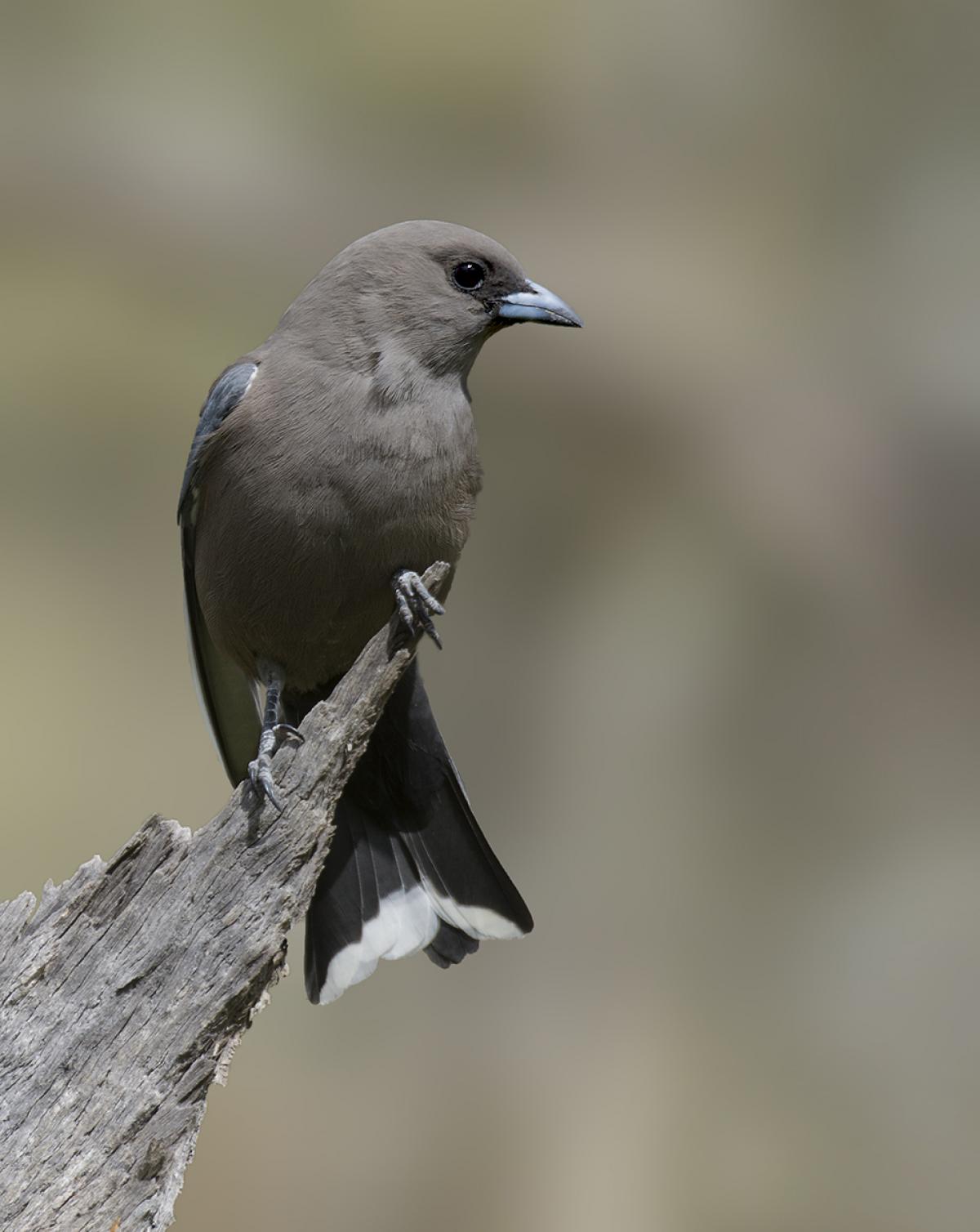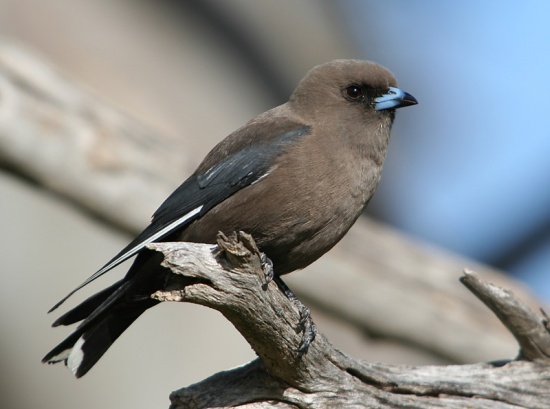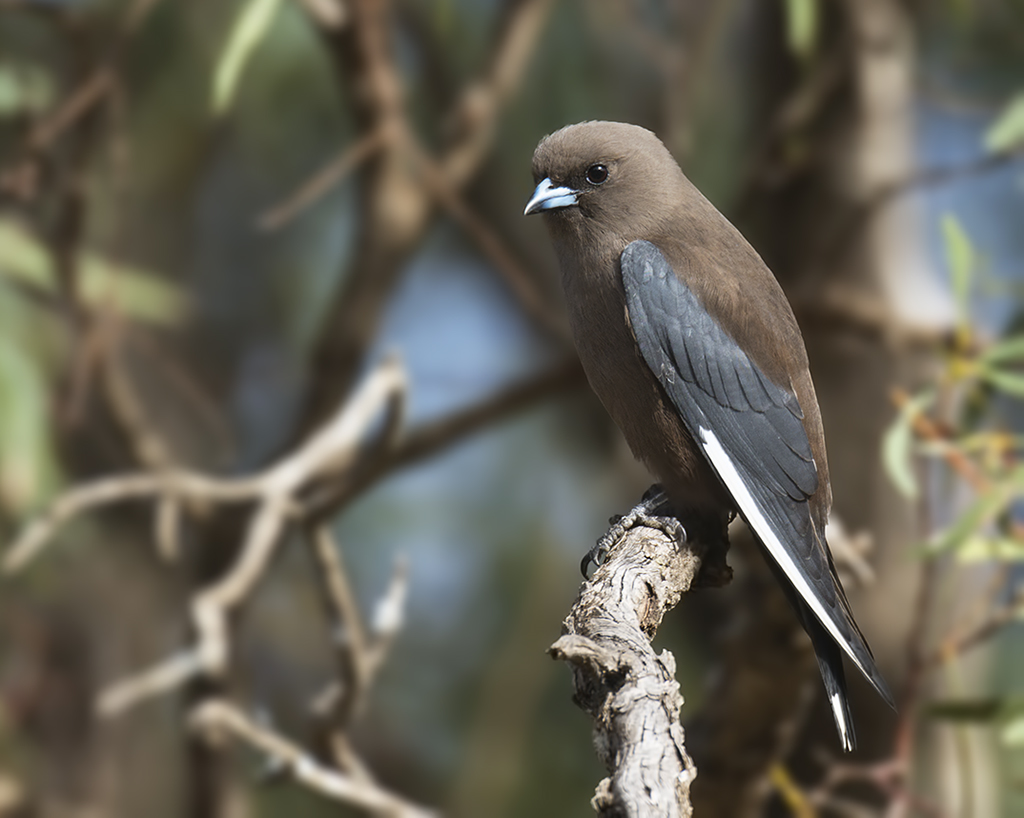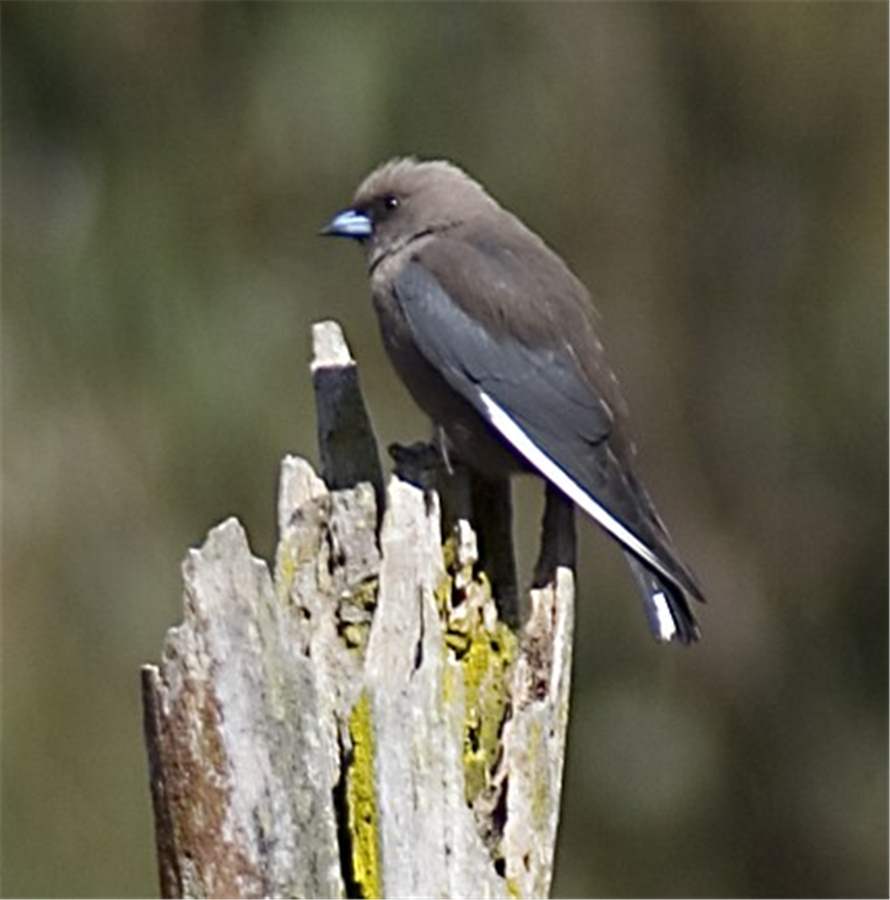
Artamus cyanopterus
TAXONOMY
Artamus cyanoptera Latham, 1801, Sydney, New South Wales,
Australia. Two subspecies.
OTHER COMMON NAMES
French: Langrayen sordide; German: Russchwalbenstar; Spanish:
Golondrina del Bosque Ahumada.
PHYSICAL CHARACTERISTICS
6.7–7.1 in (17–18 cm); 1.1–1.6 oz (31–46 g). Smoky-brown
body, dark gray wings and tail; wings edged in white, distinctive
white spots at end of tail. Underwings silvery.
DISTRIBUTION
Australian endemic. A. c. perthi is resident in southwest Australia.
A. c. cyanopterus is found in eastern South Australia up to
southern Queensland, including Tasmania, but migrates north
in winter.
HABITAT
Found in eucalypt forests and woodlands, along water courses,
and over natural clearings. Tend to prefer rural areas, and
wetter habitat than most woodswallows.
BEHAVIOR
Tends to live in small groups of several dozen birds. Social and
gregarious, often roosting in a cluster in a tree hollow. Birds
often perch close together while resting during the day. Chattering
contact call, harsh mobbing call.
FEEDING ECOLOGY AND DIET
Primarily an aerial feeder. Will also glean foliage, take ground
insects and occasionally nectar.
REPRODUCTIVE BIOLOGY
Both parents build the flimsy cup nest of plant fibers. Nests are
built in loose colonies, with territory around the nest defended.
May be cooperative breeders, with helpers at the nest. Clutch
is three to four blotched white eggs. Incubation is for 16 days,
and fledging occurs 16–20 days after hatching.
CONSERVATION STATUS
Not threatened.
SIGNIFICANCE TO HUMANS
None known.
Other popular Animals
Photo Gallery of - Dusky woodswallow




 Animalia Life
Animalia Life